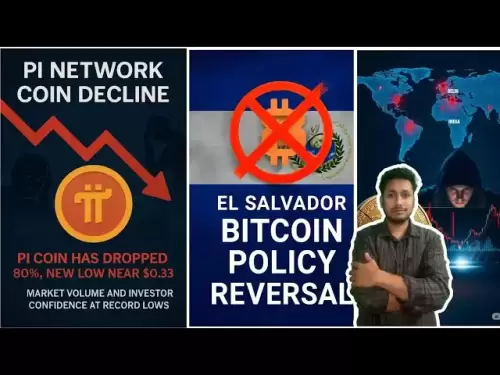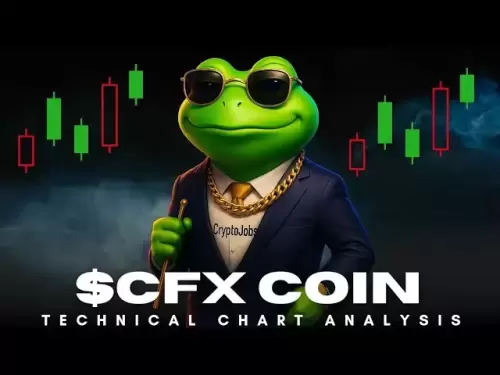-
 Bitcoin
Bitcoin $119000
-2.21% -
 Ethereum
Ethereum $4315
1.01% -
 XRP
XRP $3.151
-3.11% -
 Tether USDt
Tether USDt $0.0000
0.00% -
 BNB
BNB $808.5
-0.71% -
 Solana
Solana $175.8
-4.21% -
 USDC
USDC $0.9999
0.00% -
 Dogecoin
Dogecoin $0.2250
-3.92% -
 TRON
TRON $0.3469
1.77% -
 Cardano
Cardano $0.7818
-3.81% -
 Chainlink
Chainlink $21.47
-2.10% -
 Hyperliquid
Hyperliquid $43.30
-6.81% -
 Stellar
Stellar $0.4370
-2.84% -
 Sui
Sui $3.682
-4.40% -
 Bitcoin Cash
Bitcoin Cash $590.8
2.67% -
 Hedera
Hedera $0.2484
-5.20% -
 Ethena USDe
Ethena USDe $1.001
0.00% -
 Avalanche
Avalanche $23.10
-4.29% -
 Litecoin
Litecoin $119.2
-3.96% -
 Toncoin
Toncoin $3.409
0.90% -
 UNUS SED LEO
UNUS SED LEO $9.016
-1.29% -
 Shiba Inu
Shiba Inu $0.00001304
-3.82% -
 Uniswap
Uniswap $11.18
1.33% -
 Polkadot
Polkadot $3.913
-3.51% -
 Cronos
Cronos $0.1672
-3.08% -
 Dai
Dai $1.000
0.02% -
 Ethena
Ethena $0.7899
-4.70% -
 Bitget Token
Bitget Token $4.400
-1.23% -
 Pepe
Pepe $0.00001132
-5.93% -
 Monero
Monero $257.9
-6.44%
How to operate a perpetual contract?
Perpetual contracts offer traders flexibility and leverage to speculate on future price movements, requiring only a fractional margin deposit, but vigilance is crucial to mitigate risks, such as liquidation and margin calls, due to their volatile nature.
Dec 05, 2024 at 11:33 am
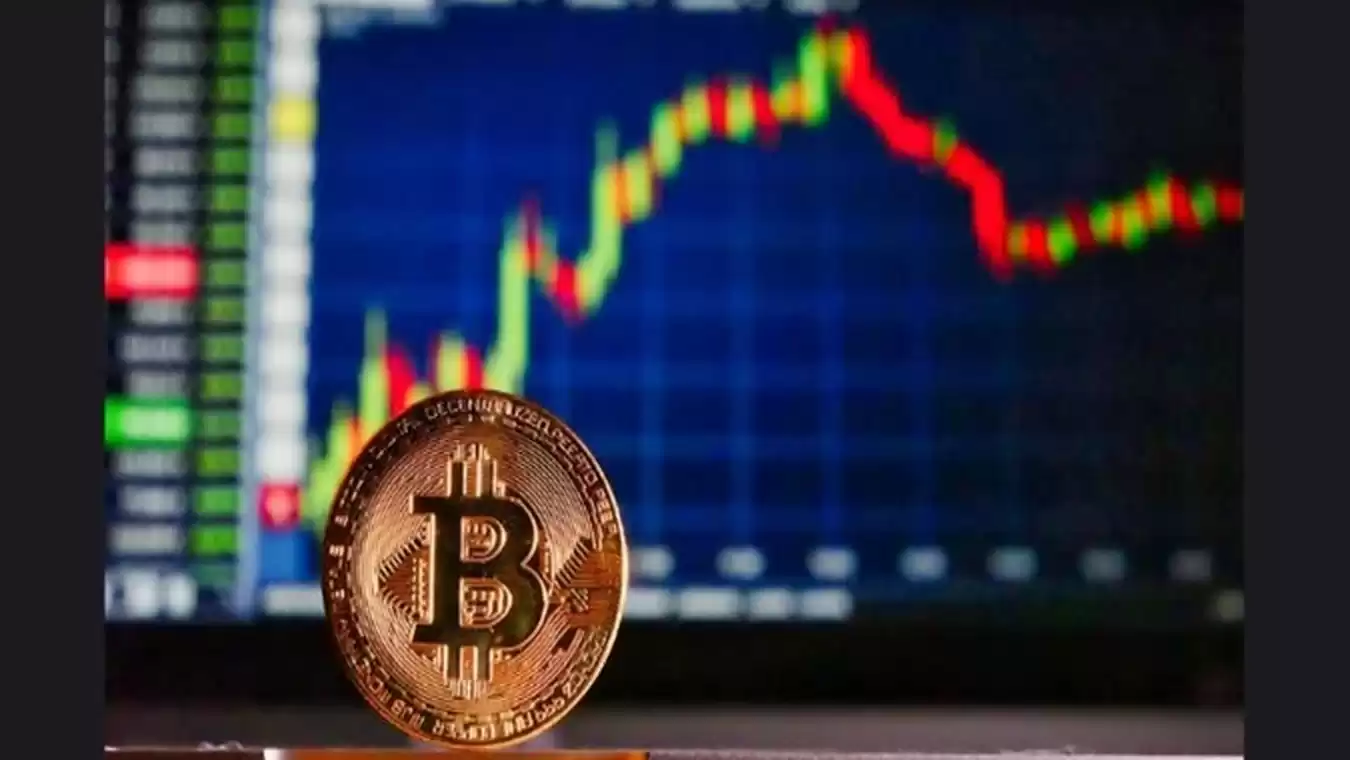
How to Operate a Perpetual Contract
Perpetual contracts are a type of financial derivative that allows traders to speculate on the future price of an underlying asset, such as a cryptocurrency, without having to take physical delivery of the asset. They are similar to futures contracts, but with some key differences. One of the key differences is that perpetual contracts do not have a fixed expiration date, meaning that traders can hold them for as long as they want. This makes them a more flexible trading instrument than futures contracts.
How do perpetual contracts work?
Perpetual contracts are traded on a margin, meaning that traders only need to deposit a small percentage of the total value of the contract in order to open a position. This leverage can amplify both profits and losses, so it is important to use it wisely.
The price of a perpetual contract is determined by the spot price of the underlying asset, plus or minus a funding rate. The funding rate is designed to encourage traders to keep the price of the perpetual contract in line with the spot price.
How to trade perpetual contracts?
To trade perpetual contracts, you will need to open an account with a cryptocurrency exchange that offers this type of trading. Once you have opened an account, you will need to deposit funds into your account and choose the perpetual contract that you want to trade.
When you open a perpetual contract position, you will need to specify the size of your position and the leverage that you want to use. You will also need to decide whether you want to go long or short on the contract.
- Going long means that you are betting that the price of the underlying asset will increase.
- Going short means that you are betting that the price of the underlying asset will decrease.
What are the risks of trading perpetual contracts?
Trading perpetual contracts can be a risky proposition, so it is important to understand the risks involved before you start trading. Some of the risks of trading perpetual contracts include:
- The risk of liquidation. If the price of the underlying asset moves against you, your position may be liquidated, meaning that you will lose your entire investment.
- The risk of margin calls. If your position loses value, you may be required to deposit additional funds into your account in order to maintain your position.
- The risk of volatility. The price of perpetual contracts can be very volatile, so it is important to be aware of the potential for large swings in value.
How to mitigate the risks of trading perpetual contracts?
There are a number of things that you can do to mitigate the risks of trading perpetual contracts, including:
- Using stop-loss orders. A stop-loss order is an order that automatically closes your position if the price of the underlying asset falls below a certain level. This can help to limit your losses in the event of a sudden drop in price.
- Using take-profit orders. A take-profit order is an order that automatically closes your position if the price of the underlying asset rises above a certain level. This can help to protect your profits in the event of a sudden rise in price.
- Managing your risk exposure. It is important to manage your risk exposure by only trading with capital that you can afford to lose. You should also diversify your portfolio by trading a variety of perpetual contracts.
Step 1: Choose a reputable exchange
The first step to trading perpetual contracts is to choose a reputable exchange. There are many different cryptocurrency exchanges out there, so it is important to do your research and choose one that is well-established and has a good reputation.
Some of the things to look for when choosing an exchange include:
- Security: The exchange should have strong security measures in place to protect your funds and personal information.
- Volume: The exchange should have a high volume of trading activity, which will ensure that you can easily get your orders filled.
- Fees: The exchange should have competitive fees.
Step 2: Open an account
Once you have chosen an exchange, you will need to open an account. This typically involves providing your name, email address, and other personal information. You will also need to verify your identity by providing a government-issued ID.
Step 3: Fund your account
Once your account is open, you will need to fund it with cryptocurrency. You can do this by depositing cryptocurrency from another wallet or by purchasing cryptocurrency directly from the exchange.
Step 4: Choose a perpetual contract
Once your account is funded, you can choose a perpetual contract to trade. There are many different perpetual contracts available, so it is important to do your research and choose one that is right for you.
Some of the things to consider when choosing a perpetual contract include:
- The underlying asset: The perpetual contract should be based on an underlying asset that you are familiar with and that you believe has potential for growth.
- The leverage: The leverage that you want to use. Leverage can amplify both profits and losses, so it is important to use it wisely.
- The fees: The fees that the exchange charges for trading the perpetual contract.
Step 5: Open a position
Once you have chosen a perpetual contract, you can open a position. This involves specifying the size of your position and the leverage that you want to use. You will also need to decide whether you want to go long or short on the contract.
Step 6: Manage your position
Once you have opened a position, you need to manage it carefully. This involves monitoring the price of the underlying asset and making adjustments to your position as needed.
Some of the things to consider when managing your position include:
- Using stop-loss orders: A stop-loss order is an order that automatically closes your position if the price of the underlying asset falls below a certain level. This can help to limit your losses in the event of a sudden drop in price.
- Using take-profit orders: A take-profit order is an order that automatically closes your position if the price of the underlying asset rises above a certain level. This can help to protect your profits in the event of a sudden rise in price.
- Adjusting your leverage: You may need to adjust your leverage from time to time as the market conditions change. If the market is volatile, you may want to reduce your leverage to reduce your risk. If the market is stable, you may want to increase your leverage to increase your potential profits.
Step 7: Close your position
When you are ready to close your position, you can do so by placing an order to sell your contract. You will need to specify the size of your order and the price at which you want to sell.
Once your order is filled, your position will be closed and you will receive the proceeds of the sale.
Disclaimer:info@kdj.com
The information provided is not trading advice. kdj.com does not assume any responsibility for any investments made based on the information provided in this article. Cryptocurrencies are highly volatile and it is highly recommended that you invest with caution after thorough research!
If you believe that the content used on this website infringes your copyright, please contact us immediately (info@kdj.com) and we will delete it promptly.
- Circle Stock, Blockchain, and Strong Earnings: A Bullish Outlook
- 2025-08-12 22:30:12
- Nexchain, Crypto Presale, and Rankings: What's the Buzz?
- 2025-08-12 22:30:12
- Arc Blockchain: Circle's Layer-1 Play Amidst $428 Million Loss
- 2025-08-12 20:30:13
- XRP Price: Riding the Bull Cycle Wave or Hitting a Wall?
- 2025-08-12 20:50:12
- Cloud Mining in 2025: Chasing Passive Income and High Returns
- 2025-08-12 20:30:13
- XRP Price Forecast: Can XRP Hit $8, $12.60, or Even $100? Surge Drivers Analyzed
- 2025-08-12 21:10:13
Related knowledge
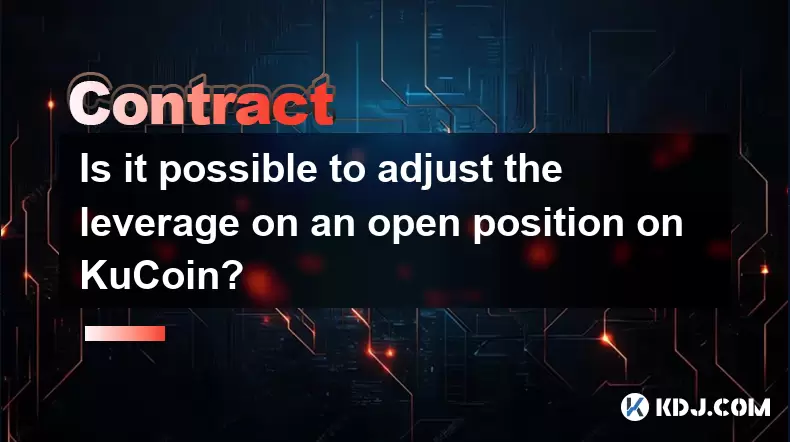
Is it possible to adjust the leverage on an open position on KuCoin?
Aug 09,2025 at 08:21pm
Understanding Leverage in KuCoin Futures TradingLeverage in KuCoin Futures allows traders to amplify their exposure to price movements by borrowing fu...
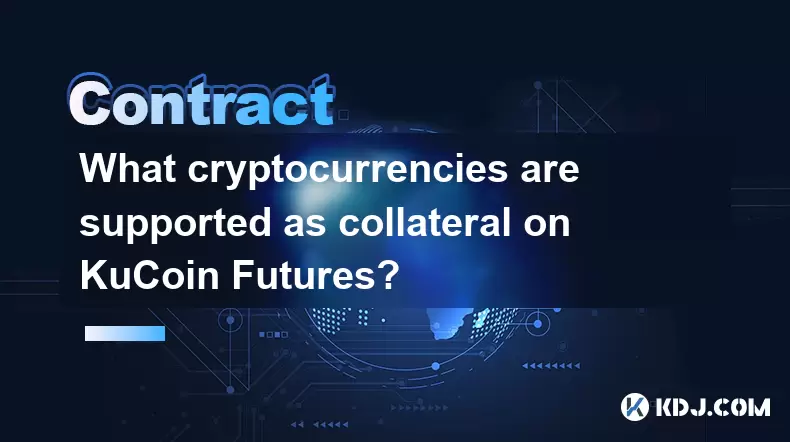
What cryptocurrencies are supported as collateral on KuCoin Futures?
Aug 11,2025 at 04:21am
Overview of KuCoin Futures and Collateral MechanismKuCoin Futures is a derivatives trading platform that allows users to trade perpetual and delivery ...
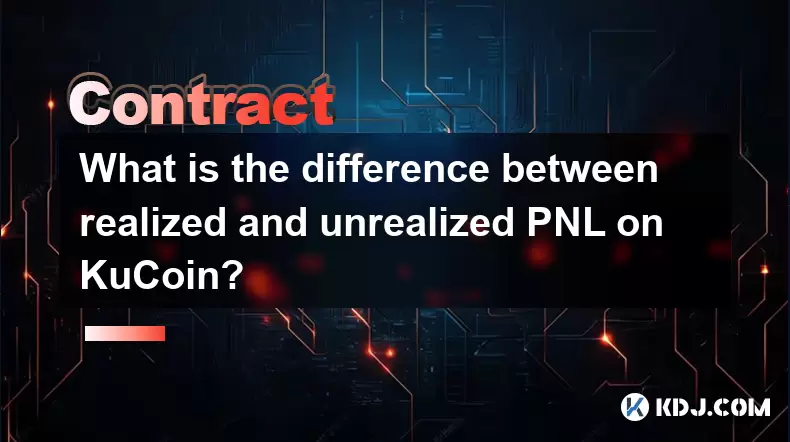
What is the difference between realized and unrealized PNL on KuCoin?
Aug 09,2025 at 01:49am
Understanding Realized and Unrealized PNL on KuCoinWhen trading on KuCoin, especially in futures and perpetual contracts, understanding the distinctio...
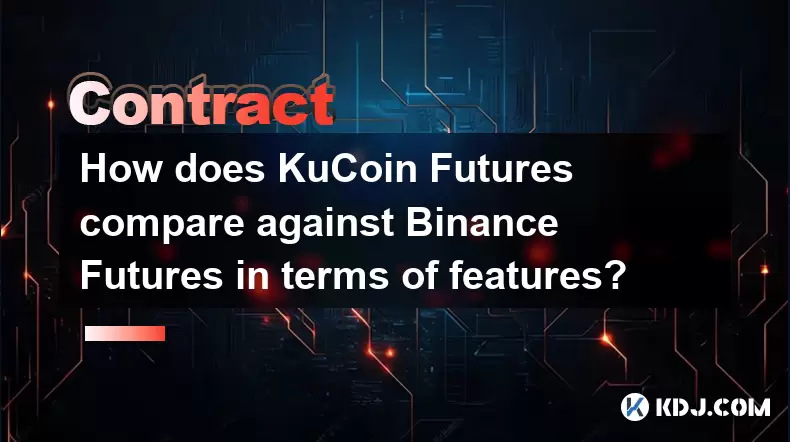
How does KuCoin Futures compare against Binance Futures in terms of features?
Aug 09,2025 at 03:22am
Trading Interface and User ExperienceThe trading interface is a critical component when comparing KuCoin Futures and Binance Futures, as it directly i...
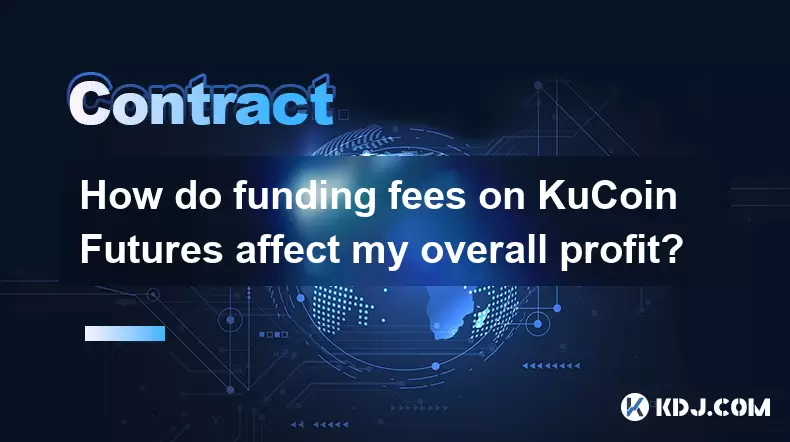
How do funding fees on KuCoin Futures affect my overall profit?
Aug 09,2025 at 08:22am
Understanding Funding Fees on KuCoin FuturesFunding fees on KuCoin Futures are periodic payments exchanged between long and short position holders to ...
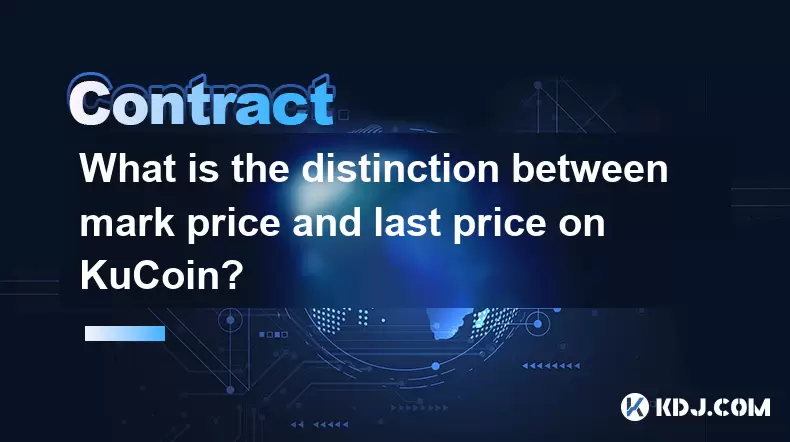
What is the distinction between mark price and last price on KuCoin?
Aug 08,2025 at 01:58pm
Understanding the Basics of Price in Cryptocurrency TradingIn cryptocurrency exchanges like KuCoin, two key price indicators frequently appear on trad...

Is it possible to adjust the leverage on an open position on KuCoin?
Aug 09,2025 at 08:21pm
Understanding Leverage in KuCoin Futures TradingLeverage in KuCoin Futures allows traders to amplify their exposure to price movements by borrowing fu...

What cryptocurrencies are supported as collateral on KuCoin Futures?
Aug 11,2025 at 04:21am
Overview of KuCoin Futures and Collateral MechanismKuCoin Futures is a derivatives trading platform that allows users to trade perpetual and delivery ...

What is the difference between realized and unrealized PNL on KuCoin?
Aug 09,2025 at 01:49am
Understanding Realized and Unrealized PNL on KuCoinWhen trading on KuCoin, especially in futures and perpetual contracts, understanding the distinctio...

How does KuCoin Futures compare against Binance Futures in terms of features?
Aug 09,2025 at 03:22am
Trading Interface and User ExperienceThe trading interface is a critical component when comparing KuCoin Futures and Binance Futures, as it directly i...

How do funding fees on KuCoin Futures affect my overall profit?
Aug 09,2025 at 08:22am
Understanding Funding Fees on KuCoin FuturesFunding fees on KuCoin Futures are periodic payments exchanged between long and short position holders to ...

What is the distinction between mark price and last price on KuCoin?
Aug 08,2025 at 01:58pm
Understanding the Basics of Price in Cryptocurrency TradingIn cryptocurrency exchanges like KuCoin, two key price indicators frequently appear on trad...
See all articles























